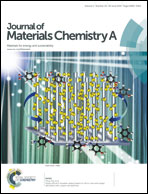The role of the Ti surface roughness in the self-ordering of TiO2 nanotubes: a detailed study of the growth mechanism
Abstract
Highly ordered TiO2 nanotubes (NTs) were synthesized by electrochemical anodization of Ti foils. We investigated the effect of the Ti surface roughness (applying different pre-treatments prior to the anodization) on the length, growth rate and degree of self-organization of the obtained NT arrays. The mechanisms related to the TiO2 NT formation and growth were correlated not only with the corresponding anodization curves but also with their appropriate derivatives (1st order) and suitable integrated and/or obtained parameters, to reveal the onset and end of different electrochemical regimes. This enables an in-depth interpretation (and physical–chemical insight), for different levels of surface roughness and topographic features. We found that pre-treatments lead to an extremely small Ti surface roughness, offer an enhanced NT length and also provide a significant improvement in the template organization quality (highly ordered hexagonal NT arrays over larger areas), due to the optimized surface topography. We present a new statistical approach for evaluating highly ordered hexagonal NT array areas. Large domains with ideally arranged nanotube structures represented by a hexagonal closely packed array were obtained (6.61 μm2), close to the smallest grain diameter of the Ti foil and three times larger than those so far reported in the literature. The use of optimized pre-treatments then allowed avoiding a second anodization step, ultimately leading to highly hexagonal self-ordered samples with large organized domains at reduced time and cost.


 Please wait while we load your content...
Please wait while we load your content...